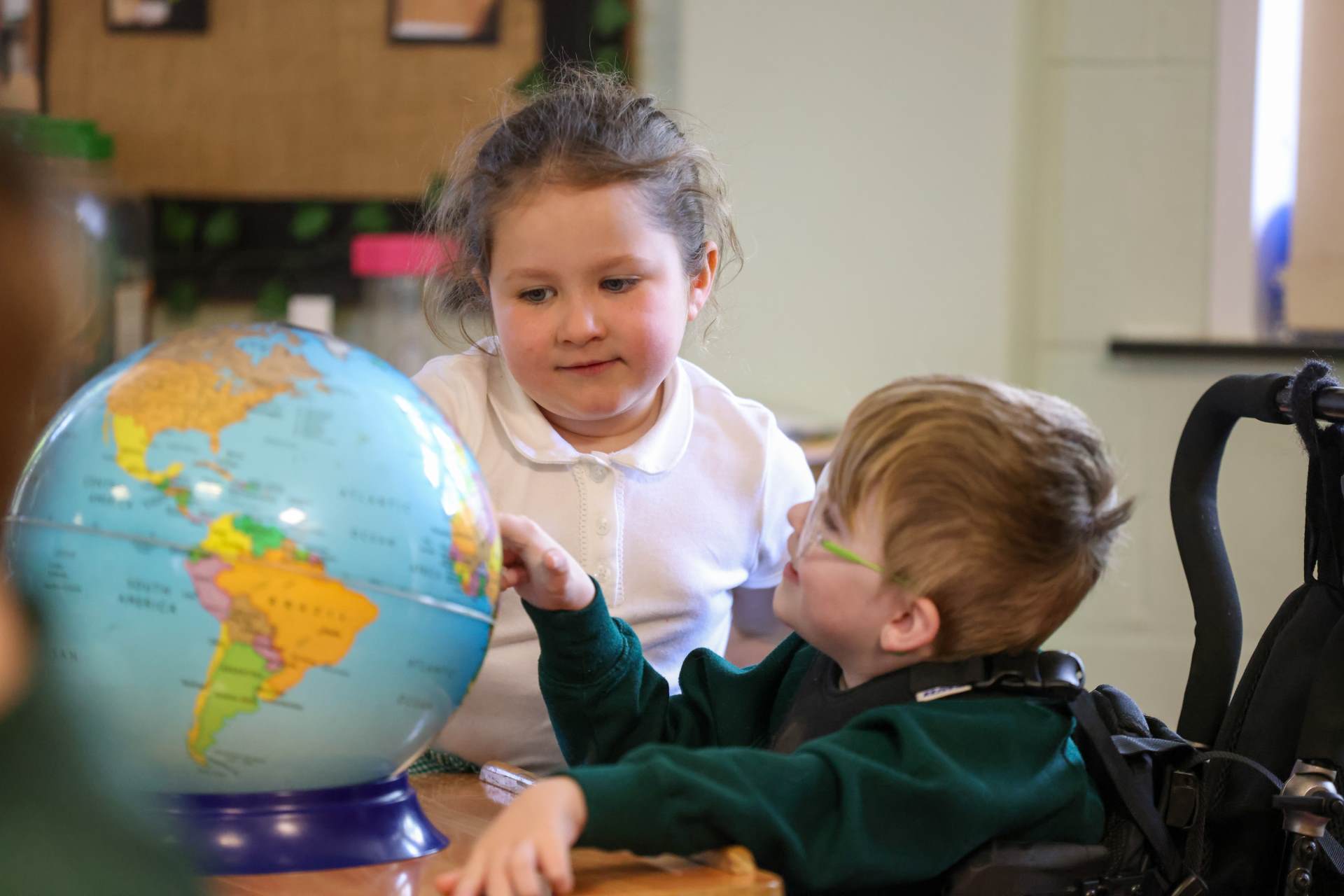Geography
Intent
At Springwood Heath Primary School, we nurture a lifelong curiosity about the world and its people, inspiring children to explore the richness of diverse places, cultures, and environments.
Our geography curriculum equips pupils with a solid understanding of both natural and human processes, helping them make sense of the interconnected world around them. From learning about distant landscapes to exploring the unique characteristics of our local environment here in Liverpool, our pupils grow as thoughtful, informed global citizens with a strong sense of place.
The National Curriculum aims to ensure that all children develop a secure understanding of the world around them. It seeks to build knowledge about diverse places, people, resources, and both natural and human environments. Through the study of key geographical concepts—such as location, place, and environmental change—pupils learn how physical and human processes shape our planet.
The curriculum equips children with essential geographical skills, including the ability to use maps, interpret data, conduct fieldwork, and communicate findings, encouraging curiosity and a lifelong interest in the world.

Implementation
Early Years
In CUSP Geography, each new study builds on what pupils have previously learned, helping children make meaningful connections as they progress. In the Early Years Foundation Stage (EYFS), children begin exploring concepts through their immediate surroundings—learning about people, cultures, communities, and the natural world through play, stories, discussions, and first-hand experiences. These early encounters lay a foundation for understanding more abstract geographical ideas introduced in Year 1.
Children describe their environment using maps and non-fiction texts, notice similarities and differences between life in the UK and other countries, observe local wildlife and nature, and begin comparing contrasting environments—all contributing to a strong start in geography.
Key Stage 1
Throughout Key Stage 1, pupils develop a contextual understanding of key global and local locations, using maps, atlases, and digital tools like GIS. They learn to recognise and describe both physical and human features, understand geographical processes, and explore how these change over time. A focus on fieldwork—especially within our local Liverpool environment—helps children apply their knowledge in real-life settings and strengthens their observational, data collection, and analysis skills.
The CUSP scheme ensures pupils explore a rich variety of topics, such as the local area of Liverpool, the United Kingdom’s nations and capitals, weather and seasons, continents and oceans, and comparisons with contrasting non-European countries. By revisiting and expanding on earlier learning, children develop secure and connected knowledge, growing into thoughtful geographers who can interpret the world around them with curiosity and confidence.
Key Stage 2
Pupils in KS2 explore a wide range of geographical themes and locations. They study the UK in greater depth, including counties, cities, rivers, and mountain ranges, and extend their knowledge to Europe, North and South America, and other key global regions. Topics include rivers and the water cycle, biomes and climate zones, settlements and land use, natural disasters such as earthquakes and volcanoes, and trade and economic activity. These studies are enriched through the use of high-quality maps, digital tools like GIS, and fieldwork opportunities that bring learning to life—especially through investigations in the local Liverpool area.
By the end of KS2, pupils are equipped with the skills to interpret a range of geographical sources, conduct fieldwork, and communicate their findings effectively. They develop a strong sense of place and global awareness, understanding how physical and human processes shape the world. The CUSP scheme ensures that pupils leave primary school with a secure, connected body of geographical knowledge and the confidence to think critically about the world around them.

Vocabulary
Geographical vocabulary is a vital part of children’s learning in Geography—it provides the language they need to describe, explain, and understand the world around them. At Springwood Heath, geographical vocabulary is carefully introduced and revisited throughout the school to ensure children develop fluency and confidence in using these terms.
From the early years, children begin by using simple words to describe their local environment, such as hill, river, weather, and map. As they move through Key Stages 1 and 2, their vocabulary grows in complexity, allowing them to express ideas with increasing precision—such as describing patterns in climate zones, the impact of deforestation, or the causes of urbanisation. Vocabulary is explicitly taught and embedded in lessons to ensure all pupils can access and engage with geographical concepts.
-
EYFS/KS1: map, town, weather, sea, river, hill, forest, home, school, near, far
-
Lower KS2: continent, ocean, region, climate, equator, physical features, human features, compass, scale
-
Upper KS2: biome, population, migration, erosion, settlement, trade, economy, latitude, longitude, topography
Impact
-
Fosters curiosity about the world and encourages children to ask thoughtful questions about people, places, and environments.
-
Builds secure geographical knowledge of both the local area and the wider world, including physical and human features.
-
Strengthens locational and place knowledge using maps, atlases, globes, and digital mapping tools like GIS.
-
Equips pupils with fieldwork skills such as observing, recording, collecting data, and drawing conclusions from first-hand investigations.
-
Develops vocabulary fluency, enabling children to speak and write confidently using accurate geographical terminology.
-
Promotes critical thinking by exploring global issues like climate change, sustainability, trade, and migration.
-
Encourages spatial awareness and the ability to interpret a range of geographical sources—from aerial photographs to thematic maps.
-
Supports understanding of interdependence and how human and physical processes shape the environment over time.
-
Provides real-world learning through use of Liverpool’s local environment as a context for enquiry and investigation.
-
Prepares children for future learning by embedding transferable skills such as teamwork, analysis, and effective communication.
Online Geography Games:
https://world-geography-games.com/world.html
Fieldwork, environment & Map skills:
https://www.ordnancesurvey.co.uk/mapzone/
https://canalrivertrust.org.uk/explorers/teachers/virtual-learning
Geography & Science:
https://www.childrensuniversity.manchester.ac.uk/learning-activities/science/energy-and-the-environment/introduction/
http://www.earthlearningidea.com/home/Teaching_strategies.html
Useful Websites for Geography:
Primary Homework Help | Online Games For Kids – BBC Bitesize
https://classroom.thenational.academy/subjects-by-key-stage/key-stage-1/subjects/geography
https://classroom.thenational.academy/subjects-by-key-stage/key-stage-2/subjects/geography




